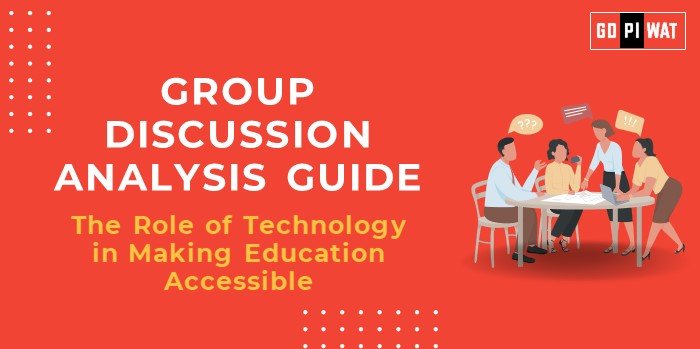📋 The Role of Technology in Making Education Accessible
🌐 Introduction to the Role of Technology in Education Accessibility
Opening Context: Technology has transformed the education sector globally, enabling new methods of teaching and learning that transcend geographical boundaries. For B-school students, understanding how technology facilitates educational access is critical in an increasingly digital and globalized world.
Topic Background: The integration of digital tools in education started with online courseware and has expanded to include adaptive learning, virtual classrooms, and mobile education platforms. The COVID-19 pandemic accelerated the adoption of digital education, highlighting both potential and challenges in making learning universally accessible.
📊 Quick Facts and Key Statistics
- 📈 Global EdTech Market Size: Projected to reach $404 billion by 2025, showcasing rapid expansion in digital learning tools.
- 🌍 Online Learners: Over 220 million students globally registered in online courses (2023), emphasizing demand.
- 📉 Digital Divide: Around 37% of the world lacks internet access, a major barrier to global education accessibility.
- 🇮🇳 India’s Digital Education Reach: Over 60 million students access digital resources through government platforms like DIKSHA.
👥 Stakeholders and Their Roles
- 🏛️ Government Bodies: Develop infrastructure and policies for affordable internet and digital tools.
- 💻 Private EdTech Companies: Innovate tools for personalized and accessible online education.
- 🌏 International Organizations: Support educational access in low-income regions via funding and policy initiatives.
- 🏫 Educational Institutions: Implement digital tools in curriculums and invest in training for educators and students.
🏆 Achievements and Challenges
✨ Achievements
- 🌐 Increased Reach: Digital platforms offer courses to millions globally.
- 💰 Cost-Effective Access: Technology reduces costs, making education affordable.
- 🎮 Innovative Learning Models: Gamification and AI provide personalized experiences.
- 🏡 Remote Education: Virtual classrooms enable learning continuity, especially during crises.
⚠️ Challenges
- 📉 Digital Divide: Limited access in rural areas and underdeveloped regions.
- ⚖️ Quality and Equity: Not all digital learning platforms meet educational standards.
- 🔒 Data Privacy Concerns: Increased online learning risks student data privacy.
Global Comparisons: Estonia has a strong digital education model with nationwide internet, while South Korea boasts a high-tech education system with universal internet access.
💡 Structured Arguments for Discussion
- ✔️ Supporting Stance: “Technology has democratized education, making quality learning accessible globally and at scale.”
- ❌ Opposing Stance: “The digital divide exacerbates inequalities, limiting education access in low-income and rural areas.”
- ⚖️ Balanced Perspective: “While technology improves access, bridging the digital divide remains essential for universal educational equity.”
🔑 Effective Discussion Approaches
- 📊 Opening Approaches:
- “With global digital access rising, technology can bring quality education to remote corners of the world.”
- “Technology’s potential to democratize education is countered by the persistent digital divide.”
- “The COVID-19 pandemic highlighted both the need and challenge of achieving universal access to digital education.”
- 🛠️ Counter-Argument Handling: Acknowledge limitations in technology infrastructure and propose solutions such as public-private partnerships to expand digital access.
📈 Strategic Analysis of Strengths and Weaknesses
- 💪 Strengths: Low-cost learning, scalability, flexible access.
- 💔 Weaknesses: Dependency on stable internet, risk of unequal access.
- 🌟 Opportunities: 5G expansion, AI in personalized learning.
- ⚡ Threats: Cybersecurity risks, reliance on technology over traditional methods.
📚 Connecting with B-School Applications
- 💼 Real-World Applications: Technology in education can be applied to projects in digital marketing for EdTech, cost analysis for online learning models, and policy-making for digital infrastructure in education.
- ❓ Sample Interview Questions:
- “How does technology enhance accessibility in education, and what challenges remain?”
- “Discuss the role of public-private partnerships in expanding digital education.”
- 🎓 Insights for B-School Students: Students should consider how digital tools can be used in consulting, product management, or policy design within the education sector.


